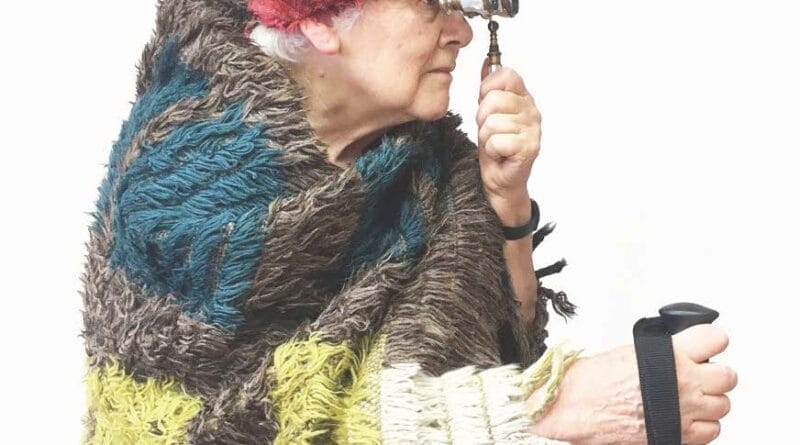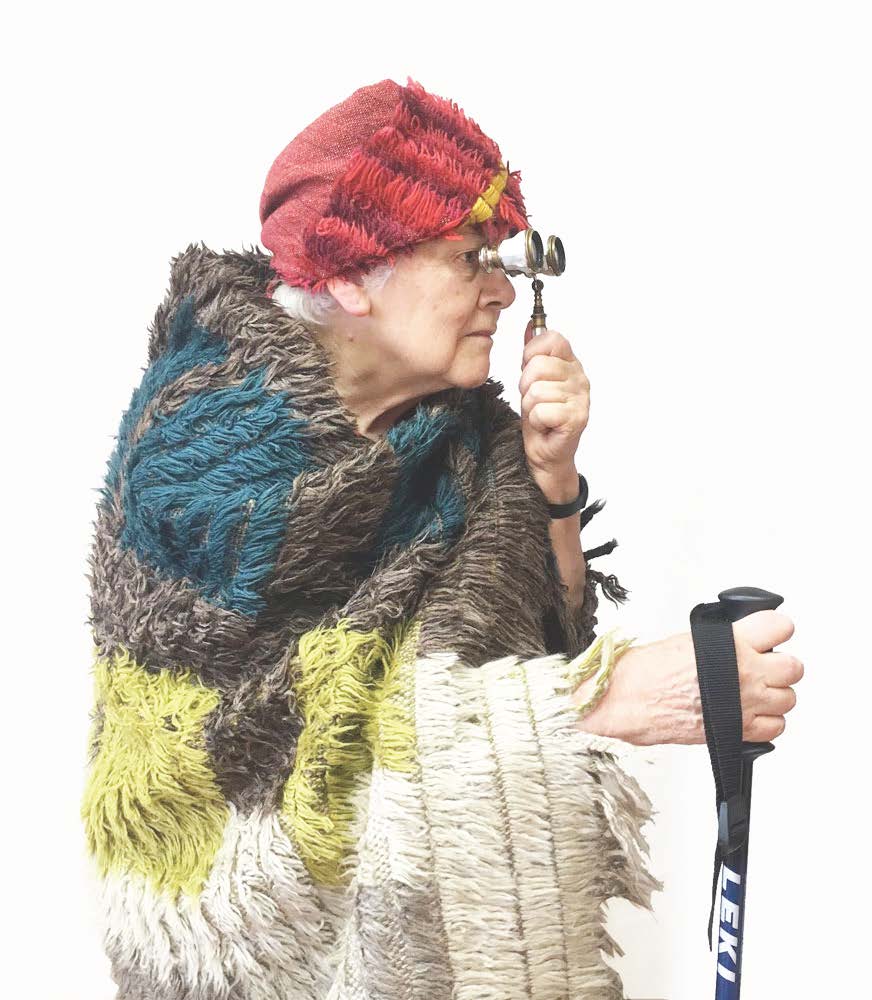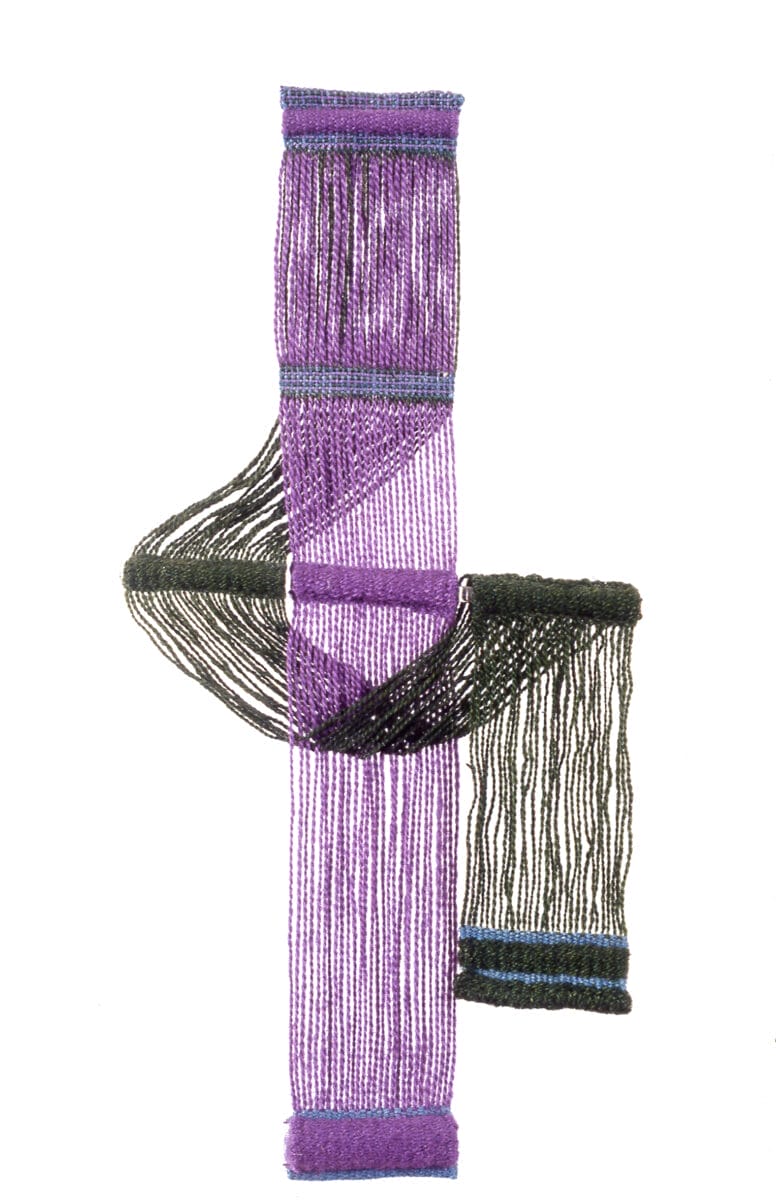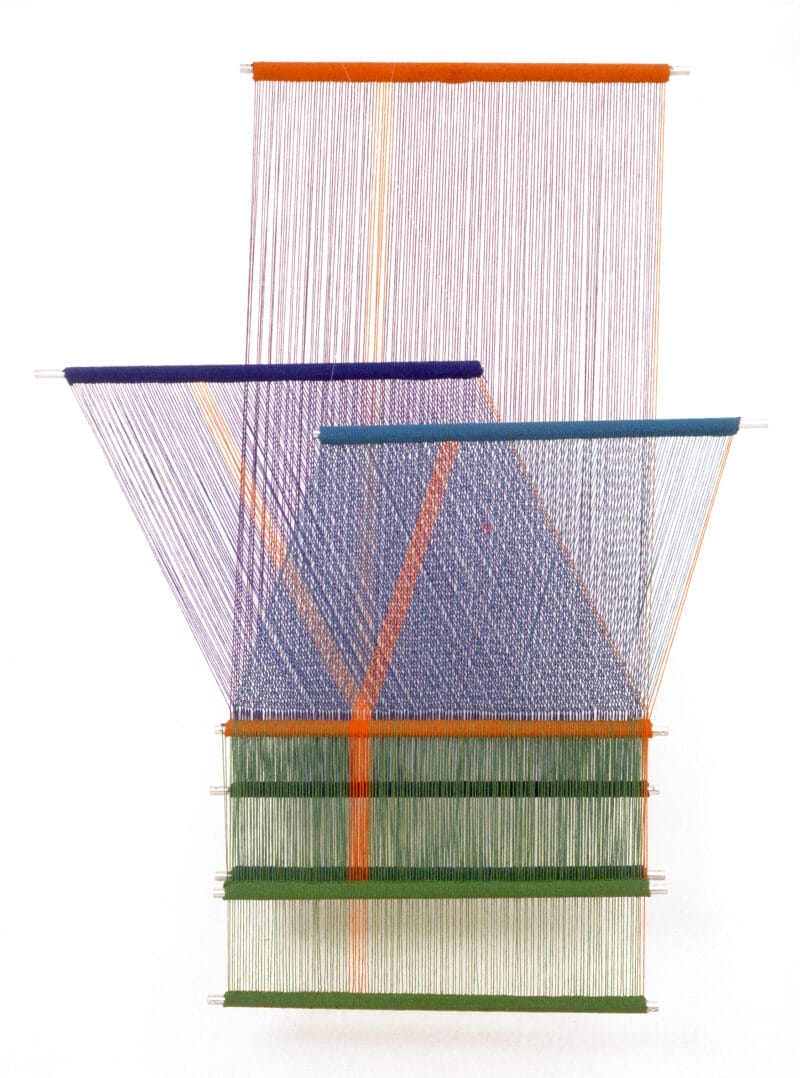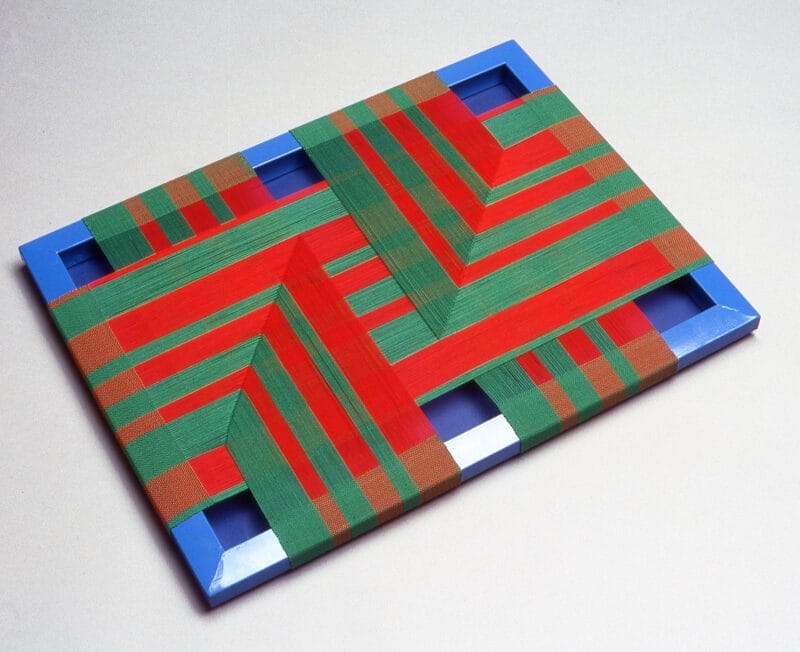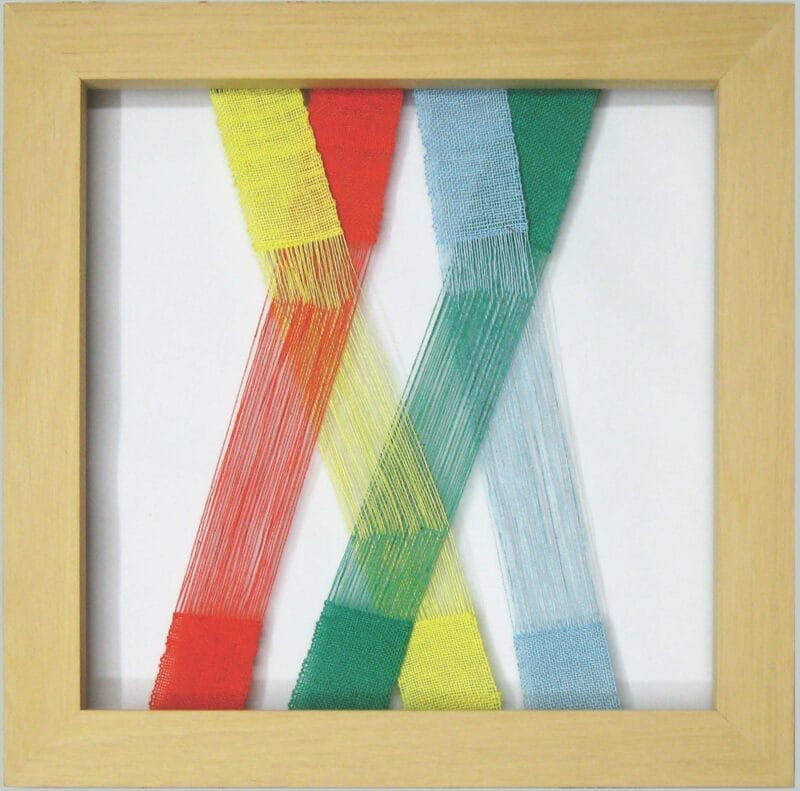PAOLA BESANA
This column will present twice a month a historical figure of Italian Fiber Art, present in the book Fiber Art Italiana. I Pionieri.
You can buy it HERE
Paola Besana (Breno1935, Milan 2021) combined her high school studies with several educational trips, including in 1958 encountering weaving for the first time in Scandinavia, where she bought a loom with which, upon returning to Italy, she began to weave as a self-taught weaver. Then from 1961 to 1963 she was in the United States where she improved technically in California and New York, studying weaving with Lily Blumenau, Trude Guermonprez and Jack Lenor Larsen, then in England with Ann Sutton.
Returning to Italy in 1968 she opened the “Studio di Tessitura Paola Besana” in Milan and in 2016 the “Associazione Studio di Tessitura Paola Besana.” Active in weaving, teaching, a member of the Italian section of the Word Crafts Council, she has been a pioneer, a mentor and a reference point for many Italian fiber artists. Since the opening of the Weaving Studio she has alternated between research, experimentation, teaching and Fiber Art. Today an archive of 1650 books related to the world of textiles can be consulted in her Studio. 001
Among her earliest artistic works Intreccio (1971) delineates the sense of her proceeding: the manual arrangement of a single thread that is both warp and weft. In the same year she was invited by Umbro Apollonio to exhibit at the Fifth Lausanne Biennial, where she brought one of her best-known works, Distrazione lombarda, whose title ironically plays on the double meaning of the word “distraction,” understood both as carelessness and as “the exit of a tendon from its natural seat.” Her works are all full of wit and accompany the sense of technique with the words that describe it, as in Magnifico R. (1968), which alludes to a palatial University Rector, proud of her purple ceremonial toga. (002)
In her long practice she creates tapestries, mini-textiles, open geometric figures that can be modified through manipulation with perspex rods or bars. In: Una strada lunga (1978) she inserts wooden rods into a canvas of wool and cotton, weaving them into the wefts so that, as she says, “It becomes entangled, as happens to many things in life.” (003) In the installation Quel chiodo fisso (1979) there are three planes of different colors, to represent three women united by the weaving and a fourth plane, green, running through them; the three characters are possessed by a fixed nail (the orange line), just “like situations and experiences that can cross each other and be crossed by the same fixation at the same time,” she explains. (004) In Piani (1986) she drapes one of the two planes of a double fabric in complementary red and green tones onto a screen-printed picture, which, through the central cut and the twisting of the second plane of the fabric, creates an illusory perspective play.
Each texture is seen as a structure on which to freely intervene to transform it into something other than itself. In Kite (1994), the folding of the four fabric flaps, in complementary colors, shows a volumetric reading of oppositions: front and back, solid color and mélange, balance and dynamism, highlighting how Besana succeeds in expressing even in the small format the search for three-dimensionality and perceptual ambiguity, through the contrast of surfaces and colors.
Between the 1980s and 1990s she received a major commission of works for two important cruise ships and made, together with her two partners Paola Bonfante and Lalla Ranza, four large tapestries for the lounges and 680 variable multiple pieces for the cabins, inspired by her work Diagonale 4 (1985), in which she had woven printed streamers in sections, resulting in complex and purely random designs; in the new works, however, the streamers are replaced by textile webbing printed on original Studio designs. In the work: A Passeggio (2011) she intersects four layers of double fabric in vivid contrasting colors, showing the constants of working with exposed warps to simulate, as the title suggests, a merry stroll. (007)
nterested in “other” textile cultures, she makes several trips to Europe, Mexico, Guatemala, Peru and Syria, conducting a methodical study and rigorous collection of the different traditional local textile structures, not only loom. Knowledge that she reworks in some of her works, such as in Chancaycat where, fascinated by the Peruvian textile culture, she uses a rare Andean technique, weaving twists of hemp webbing partially dyed in indigo and alternating the working of the woven and open parts, thus obtaining an interesting openwork effect.
In Paola Besana’s artistic journey, each work interweaves skillful textile technique, constant experimentation and a good dose of playful and colorful irony.
